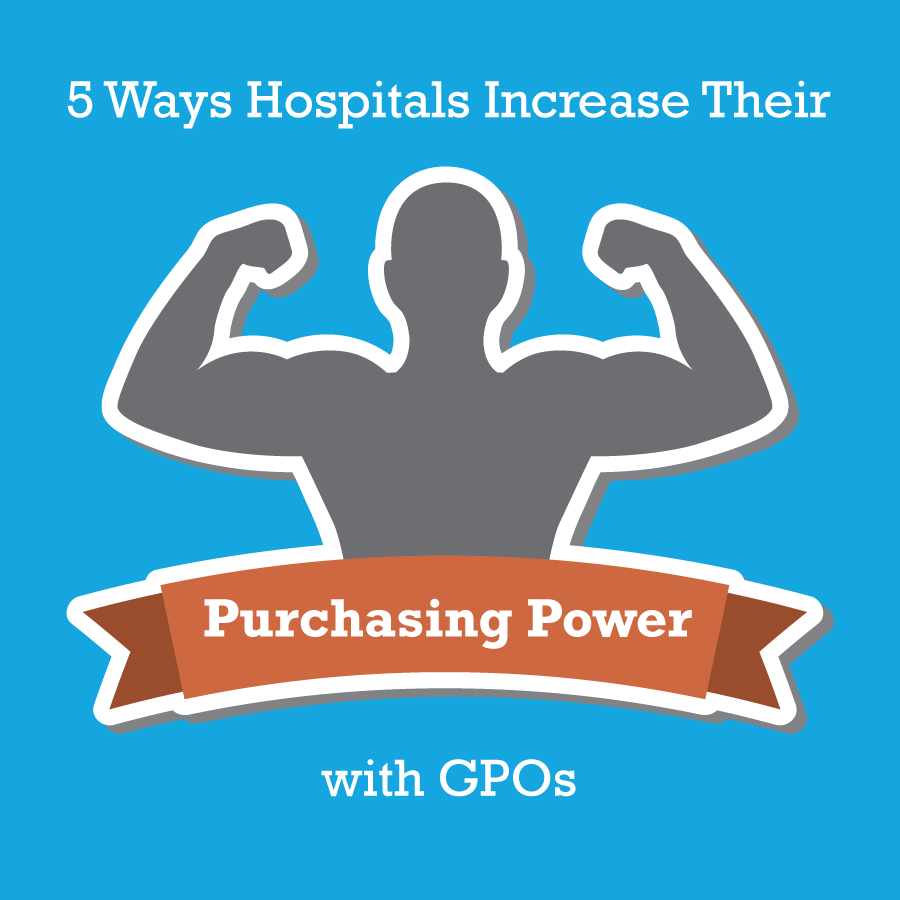Some businesses—think Wal-Mart or Amazon in the retail world—buy a lot of stuff. Their high-volume buying enables them to extract better deals from their vendors, the kind of deals that smaller businesses simply don’t have the clout to command.
But what if a bunch of smaller businesses banded together to form a buying organization that, collectively, was able to negotiate the same pricing and terms that the “big guys” do? Then all members could share in the benefits of the increased purchasing power.
These buying organizations already exist: they’re called group purchasing organizations, or GPOs. In the healthcare industry, GPOs negotiate high-volume deals for their members on both goods and services.
GPOs can be either regional or national. As the name implies, national GPOs have members nationwide and typically negotiate with vendors that can provide services across the country, whereas regional GPOs—such as GNYHA, TPC, Resource Optimization & Innovation (ROi), and Associated Purchasing Services (APS)—focus on smaller groups of hospitals in a defined geographic area and also try to work with local and regional vendors more often than the national GPOs do.
How GPOs Boost Purchasing Power
- Aggregating purchase volume. Vendors are willing to cut deals with GPOs because of the reduced overhead of dealing with one customer instead of hundreds. By aggregating the purchasing volume of their members, it’s a win-win for both the vendors and members.
- Negotiating the best price. By aggregating their members’ purchase volume as mentioned above, GPOs have the ability to use that volume as a carrot or stick with the vendor community. Some vendors see a GPO as a carrot: a way to increase market share quickly if they provide the best price possible. Others see it as a stick: a way to squeeze margin from the vendors. Either way, GPOs have done a great job at providing their members with the best prices possible.
- Negotiating the best contract terms and conditions. Besides great pricing, GPOs provide their members access to better pre-negotiated terms and conditions than a member can typically get on their own. This is crucial for purchased services contracts where the terms and conditions can take months to hammer out. From better payment terms and return policies to tighter legal protection around indemnification, GPO contracts give their members a head start in the negotiation process.
- Subject matter experts on staff. It’s a GPOs job to have in-house expertise in all things related to the healthcare supply chain. These experts use their knowledge of everything from latex gloves and purchased services to cutting-edge laboratory equipment to satisfy members’ requirements. Members can tap these resources to get recommendations and in-depth analyses of competing products and service options.
- Access to new products and services. GPOs, with the combined purchasing power of their members, can often get early access to new products and services. Vendors are happy to get these new products into as many hands as possible, speeding market penetration while minimizing marketing costs.
Membership in GPOs has some costs associated with it. There are typically annual membership dues and they take an administrative fee from the purchase volume on their contracts. This fee ranges from .5% to over 12% (yes, it still happens) depending on the category and vendor; however, the typical fee is around 3%.
Healthcare organizations should weigh this cost against the potential savings, both for the purchase of supplies and services and for the reduced overhead involved in dealing with vendors. But with all these benefits, it’s an analysis that’s well worth the effort.

